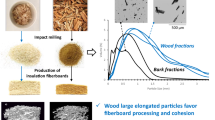
Overview
- First manual for the study of fire-cracked rocks, providing a groundbreaking new approach to lithic analysis and function
- Comprehensive guide for students and professionals in the field and lab, and data interpretation
- Develops methods and theories for understanding how fire-cracked rock was used in cultural and cooking practices
Part of the book series: Manuals in Archaeological Method, Theory and Technique (MATT)
Access this book
Tax calculation will be finalised at checkout
Other ways to access
About this book
This volume is the first manual book to address fire-cracked rock (FCR) or fire-affected rock analysis, thus filling a significant gap in the market and in the existing literature. This book develops a method and theory for how FCR was used, to familiarize readers with a new approach to FCR analysis. The book provides a history and background of fire-cracked rock and leads the reader through the entire process of identifying, categorizing, and analyzing FCR and related features, from the first steps through to interpretations of function, use-alteration, fracturing patterns, experimentation, ethnographic/ethnohistoric uses, and so forth. In addition to exploring the fundamentals of FCR analysis, the book will also cover new and cutting-edge techniques.
This manual is designed to walk archaeologists from step one of FCR analysis to final advanced interpretations of use. It is meant to serve as a laboratory and field guide for students and professionals, containing illustrations, photographs, and case studies in order to familiarize readers with the identification and analysis process while also providing a theoretical and methodological guide for advance academic and cultural resource management research. Thus, this book is meant to target a wide global audience and spatiotemporal range, spanning hundreds of millennia of the human experience, from paleoanthropology and the early adoption of fire through to the present.
Where FCR was once simply quantified according to weight and size, this book will transform it into a significant diagnostic artifact in the study of ancient foodways and domestic life. At sites where organic preservation is poor to non-existent, and the quotidian sphere is obscure, the use of FCR to determine cooking methods and everyday life will come as a breakthrough. This will be a pioneering manual for the study of FCR, focusing on the ways practicing archaeologists can infer function from their FCR collections.
Similar content being viewed by others
Keywords
- Fire-Cracked Rock and Fire-Affected Rock
- Archaeological Method and Theory
- Lithic Analysis, Technology and Function
- Environmental Archaeology
- Use-Alteration and Use-Wear Analysis
- Hot-Rock Cooking, Burned Rock Features, Site Formation
- Foodways, Food Preparation, and Subsistence
- Household Archaeology
- Hunter-Gatherer and Prehistory
- fire-cracked rock in experimental archaeology
- fire-cracked rock in ethnography
- Uses of fire-cracked rock in ethnohistory
- use alteration and fracture patterns of fire cracked rock
- Fire-cracked rock as archaeological evidence
- Fire Affected Rock
Table of contents (6 chapters)
-
Front Matter
-
Back Matter
Authors and Affiliations
About the author
Fernanda Neubauer has a PhD in Anthropology/Archaeology and is currently a Lecturer in Anthropology at the University of California, Los Angeles. She is also an Honorary Fellow in Anthropology at the University of Wisconsin-Madison. Her research includes lithic analysis, fire-cracked rock, hot-rock cooking, foodways, gender, and decolonizing methods, as well as long-term projects carried out in collaboration with indigenous communities in North and South America. She is a lithic expert with approximately two decades of experience in archaeology. Her research, which won several professional awards, has contributed to the content of this manual.
Accessibility Information
PDF accessibility summary
EPUB accessibility summary
Bibliographic Information
Book Title: Fire-Cracked Rock Analysis
Book Subtitle: A Guide to Function, Cooking and Interpretation
Authors: Fernanda Neubauer
Series Title: Manuals in Archaeological Method, Theory and Technique
DOI: https://doi.org/10.1007/978-3-031-64824-3
Publisher: Springer Cham
eBook Packages: History, History (R0)
Copyright Information: The Editor(s) (if applicable) and The Author(s), under exclusive license to Springer Nature Switzerland AG 2024
Hardcover ISBN: 978-3-031-64823-6Published: 23 July 2024
Softcover ISBN: 978-3-031-64826-7Published: 24 July 2025
eBook ISBN: 978-3-031-64824-3Published: 22 July 2024
Series ISSN: 1571-5752
Edition Number: 1
Number of Pages: XV, 249
Number of Illustrations: 18 b/w illustrations, 69 illustrations in colour
Topics: History, general, Archaeology, Anthropology



